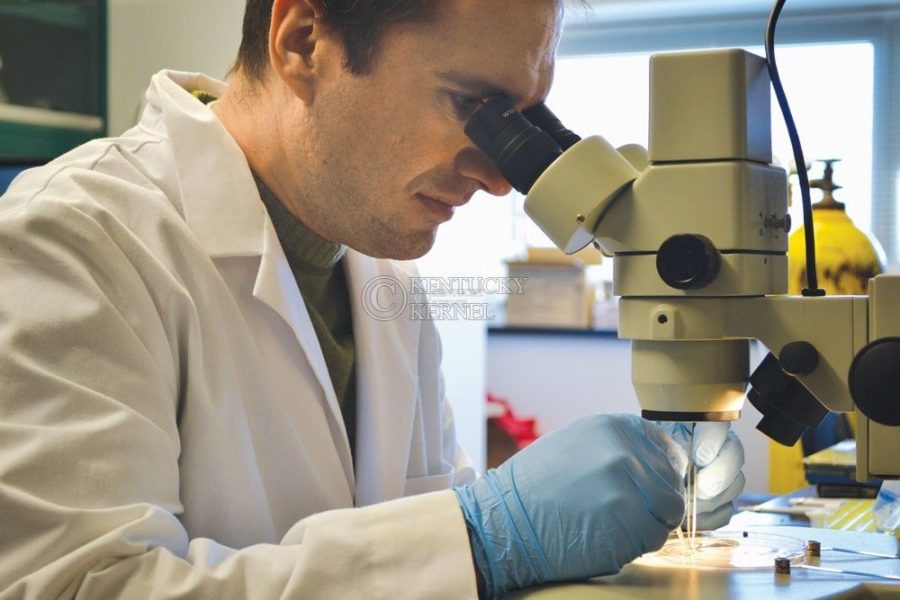Doctor’s research works toward curing blindness
February 11, 2011
A cure for a leading cause of blindness may soon be within reach.
UK medical researchers directed by Dr. Jayakrishna Ambati, professor of physiology and the vice-chair of UK HealthCare Ophthalmology and Visual Sciences, have isolated the previously unknown cause of geographic atrophy.
Geographic atrophy is an advanced condition of the “dry” form of age-related macular degeneration. It causes permanent blindness in its sufferers by accelerating the degeneration of retinal cells.
“Macular degeneration is the leading cause of blindness in this country, and in many other industrialized nations … it affects tens of millions of people around the world,” Ambati said. “There are hundreds of thousands of people every year who go blind from macular degeneration just in America.”
He also mentioned that it is a problem he sees frequently in his own patients.
Ambati called attention to the fact that the ailment is not just for the elderly.
“A 50-year-old woman has a four times greater risk of developing macular degeneration in five years than she has of developing breast cancer in those same five years,” he said.
The true cause of the affliction has largely been unknown until Ambati and his team of medical scientists located the conflict at the molecular level.
The research was showcased in the prominent scientific journal, Nature, on Feb. 6 and found that decreased numbers of the enzyme DICER1 causes the accumulation of a cytotoxic material called Alu RNA.
With the results of this study, Ambati’s team has been able to formulate an approach to dealing with the harmful Alu RNA.
“We’re focusing on, from a clinical trial perspective, to block these toxic, double-stranded RNA molecules (Alu RNA),” he said. “We have developed one class of drugs, and we are looking at whether there may be other even better drugs to block this molecule.”
Perhaps the most exciting information for patients of this condition is that the researchers hope to make more progress very soon.
“We hope to make our choice of what’s called a lead candidate by the summer,” Ambati said, “so once we have a lead candidate drug, then we can do studies to make sure that’s it safe and then apply to the (Food and Drug Administration) … to get the permission to start a clinical trial, and we hope to be at that position by the end of this year.”
































































































































































